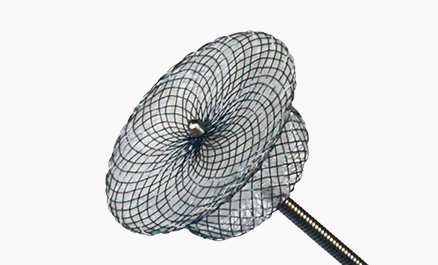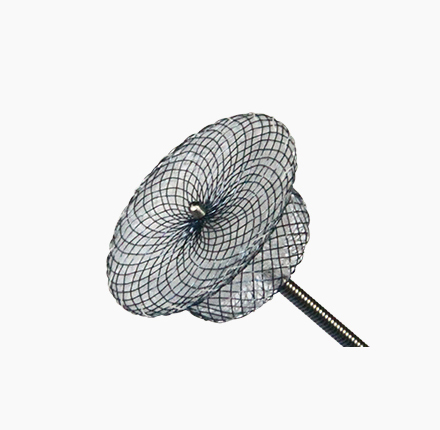Basic information
The cardiovascular disease occluder is a proprietary interventional treatment device for the treatment of congenital heart disease. It consists of a skeleton woven from alloy wires and an inner core filled with it to block blood flow. It is transported to the patient's abnormal vascular channel through the venous blood vessel through a conveyor and proprietary equipment. Based on its shape memory performance characteristics and super elasticity, the nickel-titanium alloy achieves reliable sealing and cardiac motion compliance, through minimally invasive interventional methods. The purpose is to block the patent ductus arteriosus so that these patients can be treated without surgery.

Performance advantages
This product is a minimally invasive interventional device used in congenital heart surgery to treat common congenital heart diseases. In addition to being the same as domestic similar products for internal medicine intervention, this product can also be used for minimally invasive surgical intervention through the company's surgical delivery system. This surgical delivery system delivers the occluder directly to the lesion through transthoracic puncture through a puncture sheath. It does not require large-scale X-ray imaging equipment (and does not require the use of contrast agents), does not require other interventional tools, and does not involve peripheral blood vessels. It only requires ultrasound equipment. It is performed in the operating room under guidance. There is no age limit for patients. The method of use is direct and simple, and the operation time is significantly shortened and safe. It effectively avoids long-distance complex operations in peripheral blood vessels, which are difficult and prone to complications. The cost of interventional treatment is significantly lower than that of cardiology. Compared with surgery, it is less invasive, does not require extracorporeal circulation, does not require blood transfusion, and greatly reduces the workload and intensity. Since it does not require large-scale X-ray imaging equipment, it is easy to use and use in grassroots cardiac and thoracic surgeries. promotion.
Scope of application
It is suitable for peripheral vascular intervention in cardiology department and transthoracic minimally invasive intervention in congenital heart surgery to perform interventional treatment on patients with patent ductus arteriosus.


 Heart Valve repair and treatment
Heart Valve repair and treatment Congenital Heart Disease Treatment
Congenital Heart Disease Treatment
